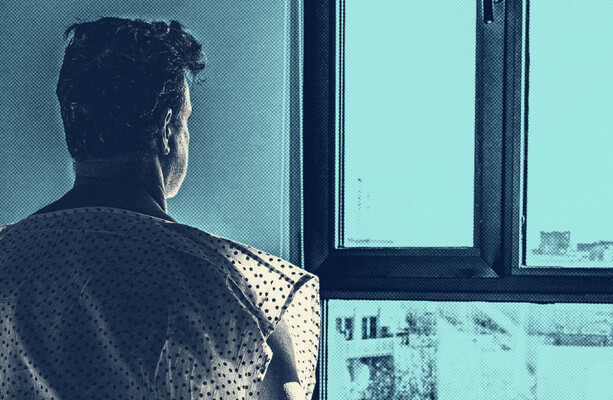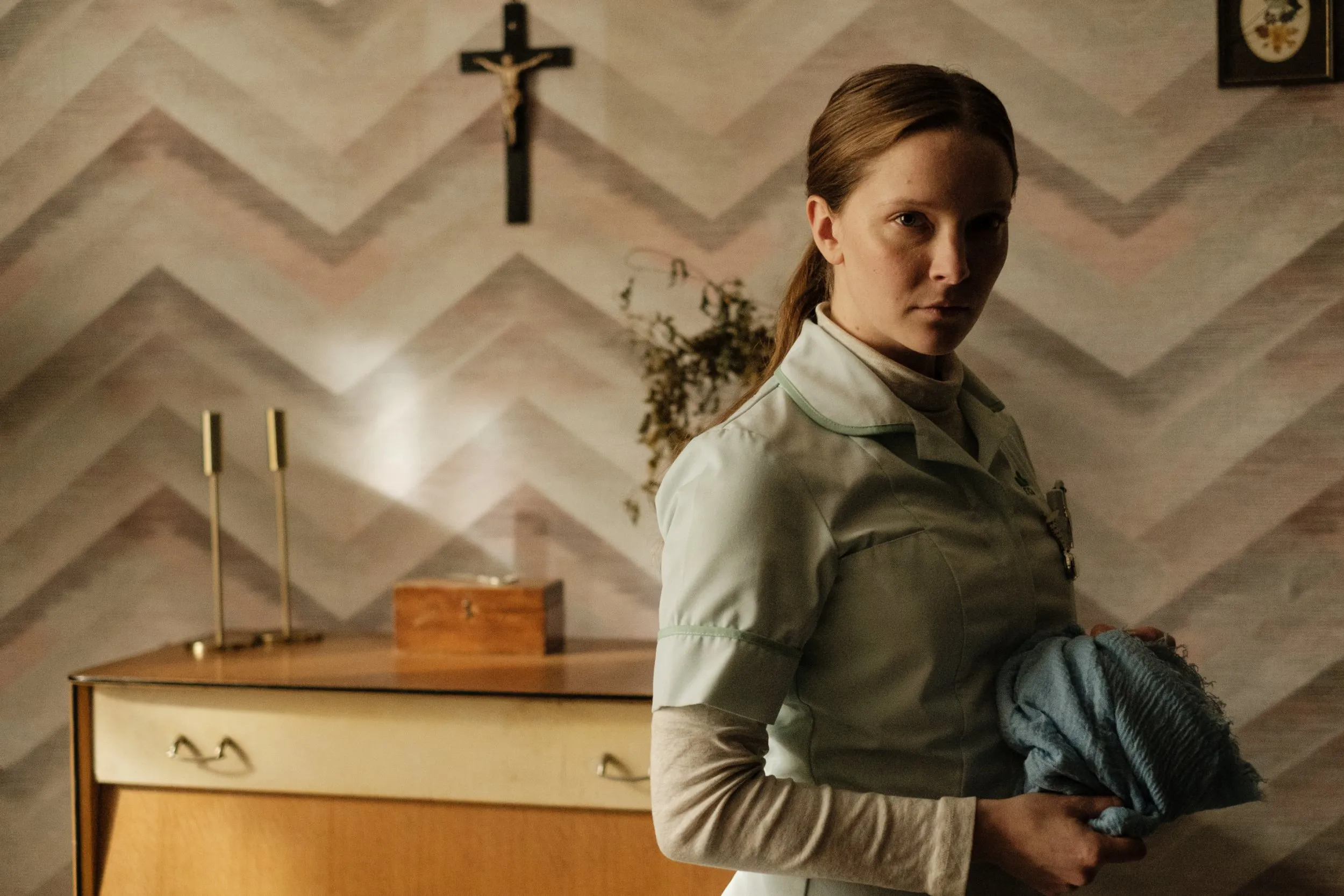Copyright Screen Rant

Horror films are meant to disturb, but some push past fear into full-on discomfort. Whether it’s through graphic violence, psychological torment, or transgressive ideas, certain movies go places that even die-hard audiences find hard to stomach. These aren’t just scary: they’re challenging, controversial, and often impossible to forget. The following horror films didn’t just flirt with the boundaries of taste; they intentionally obliterated them. From extreme body horror to morally shocking scenarios, each movie here proves that horror’s most frightening tool isn’t blood – it’s audacity. They each revel in their revulsion, with some feeling like a dare from the director to even get to the end. Hostel (2005) Eli Roth’s Hostel exploded onto the horror scene during the mid-2000s torture-porn craze. Yet even among its peers, it stood out. Following a group of travelers who fall victim to a black-market organization that lets people pay to torture others, the film’s premise alone was enough to turn stomachs. Roth’s direction takes sadism to uncomfortable extremes. Limbs are severed, eyes are sliced, and the camera never looks away. What begins as a dark travel comedy devolves into one of the most disturbing depictions of human cruelty ever put on film. Hostel’s intensity sparked debate about whether it was horror or exploitation. While some hailed it as social commentary on Western privilege, others simply found it too gleeful in its brutality. It’s a film that made audiences look away rather than lean in, though its original ending was way darker. Cannibal Holocaust (1980) Ruggero Deodato’s Cannibal Holocaust remains one of cinema’s most infamous provocations. Presented as found footage decades before The Blair Witch Project, it follows a documentary crew that ventures into the Amazon to exploit an indigenous tribe. What shocked audiences wasn’t just the gore, but its realism. The film’s violence felt so authentic that it spawned a false legend that Deodato was arrested on suspicion of murder and forced to prove his innocence. In fact, Deodato was hauled into court for animal cruelty. Cannibal Holocaust featured numerous scenes of animal abuse and slaughter that were all filmed for real. Add in the realistic human deaths, and it’s easy to see why the movie was banned in multiple countries. Despite its grotesque imagery, Cannibal Holocaust critiques the Western appetite for sensationalism – showing that the so-called “civilized” filmmakers are the true monsters. Still, for many viewers, its message is buried beneath the sheer horror of what unfolds onscreen. Terrifier 3 (2024) The third installment in Damien Leone’s Terrifier saga, Terrifier 3, took the grisly precedent to all new heights. Centered once again on David Howard Thornton’s nightmarish Art the Clown, the series has earned a reputation for pushing the boundaries of on-screen brutality. Its commitment to practical effects is as impressive as it is stomach-churning. In Terrifier 3, Leone doesn’t just revisit the blood-soaked formula; he escalates it. From Cole’s horrifying chainsaw death to Aunt Jessica’s revolting rat-and-tube demise, the film gleefully indulges in excess. It’s a carnival of carnage that makes even seasoned horror audiences squirm. Terrifier 3 is also notably funnier than its predecessors. While this makes for slightly easier viewing, it also creates a sickening contrast when Art brutally murders people while dressed as Santa Claus. For a notably disgusting franchise, Terrifier 3relishes taking it as far as possible. Would You Rather (2012) Would You Rather begins with a simple premise. It depicts a group of desperate people competing in a deadly dinner party game where refusal means death. What starts as psychological tension quickly becomes a stomach-turning descent into torture, morality, and manipulation. Each round escalates in cruelty, from electrocution to mutilation. All of this is orchestrated by a wealthy sociopath who sees human suffering as entertainment. Brittany Snow’s performance grounds the horror, but the film’s sadistic creativity leaves little room for relief. What makes Would You Rather so disturbing isn’t just the violence, but its plausibility. The movie’s premise feels eerily possible in a world obsessed with wealth disparity and power. It’s less about monsters and more about the human capacity for cruelty, which might be why it lingers long after the credits roll. Tusk (2014) Kevin Smith’s Tusk is one of the strangest and most polarizing horror films of the 2010s. What begins as a quirky comedy about a podcaster interviewing an eccentric recluse quickly devolves into grotesque body horror when the recluse reveals his true intentions. He seeks to surgically transform a man into a human walrus. This sounds absurd on paper, but Smith plays it straight. He creates a grotesque blend of humor and psychological torment. Justin Long’s slow transformation is both horrifying and tragic, with practical effects and a stunning horror movie performance that make it disturbingly real. Many dismissed Tusk as a bizarre experiment, but its commitment to absurd horror makes it unforgettable. Beneath the madness lies a cautionary tale about dehumanization, obsession, and how easily curiosity can become punishment. It’s ridiculous, and that’s exactly what makes it horrifying. The House That Jack Built (2018) Lars von Trier’s The House That Jack Built follows a serial killer recounting his murders as he philosophically analyzes his “art.” The film was so graphic that dozens of viewers infamously walked out of its Cannes premiere. At its center, Matt Dillon’s chilling performance anchors the madness. Each of Jack’s “incidents” becomes a meditation on violence and narcissism. Von Trier forces viewers to question their own complicity in watching, blurring the line between audience and accomplice. It’s simultaneously grotesque and disturbingly self-aware. What makes The House That Jack Built go too far isn’t just its brutality, it’s its intellect. The film dares to intellectualize horror, making the audience feel dirty for engaging with it. It’s a movie that both condemns and celebrates itself, leaving viewers numb and conflicted. Salò, Or The 120 Days of Sodom (1975) Pier Paolo Pasolini’s Salò adapts the Marquis de Sade’s novel into a scathing allegory of fascist Italy. It’s set in a secluded villa where the Powerful inflict unspeakable acts on their captives. The result is less a horror movie than a descent into moral oblivion. The film’s explicit content includes sexual violence, degradation, and sadism. It remains among the most disturbing ever filmed. Pasolini uses extreme imagery not to shock aimlessly, but to expose the cruelty of authoritarian power and the dehumanization it breeds. Still, its unrelenting nihilism makes it nearly unwatchable. Even film scholars who praise Salò’s purpose admit its horror lies in its realism. It’s a masterpiece of disgust: a film that forces viewers to look at the ugliness they would rather ignore. The Human Centipede 2: Full Sequence (2011) Tom Six’s sequel to The Human Centipede goes far beyond the original’s grotesque concept. Presented in grimy black-and-white, it follows a mentally disturbed man inspired by the first film who decides to recreate the experiment. Only his plans are bigger and bloodier. Unlike its predecessor, Full Sequence strips away any sense of humor or restraint. It’s an endurance test of cruelty and depravity, pushing body horror to its limit. The protagonist’s obsession makes it a grim reflection on how the media can fuel madness. Critics and censors condemned the film’s extremity, but that’s precisely its point. It’s horror about horror itself, presented in a style that feels gross in and of itself. While almost impossible to sit through, its raw ugliness mirrors the audience’s own curiosity, making it both revolting and morbidly fascinating. Martyrs (2008) Pascal Laugier’s Martyrs begins as a revenge thriller and ends as a meditation on pain, faith, and transcendence. Two young women who are victims of cruel abuse as children seek revenge. However, they soon discover a secret cult that tortures people in search of enlightenment. The violence is unflinching but purposeful, with Laugier using suffering as a metaphor rather than as spectacle. The second half transforms into existential horror, exploring what lies beyond death and meaning in agony. It’s one of the few films where brutality feels philosophical. Martyrs is divisive because it dares to find beauty in torment. Some see it as genius, others as exploitation. Yet few horror films have the courage to confront pain so directly – or leave viewers feeling as spiritually shaken as physically ill. A Serbian Film (2010) A Serbian Film is the line many horror viewers refuse to cross. It follows a retired adult film actor lured into a “final project” that spirals into unspeakable acts of sexual violence, including against children. It features scenes that led to worldwide bans and censorship. The film attempts to satirize the exploitation of Serbia’s post-war society, but its extremity overshadows any message. The shocking content is so graphic that even describing it feels uncomfortable, and that’s likely the point. It provokes revulsion rather than fear. While some defend it as political art, A Serbian Film remains notorious for going too far. It’s less a horror movie than a dare. It’s a test of how much suffering a viewer can endure. Few ever make it to the en, and it is perhaps the most unnecessarily upsetting horror movie ever made.



